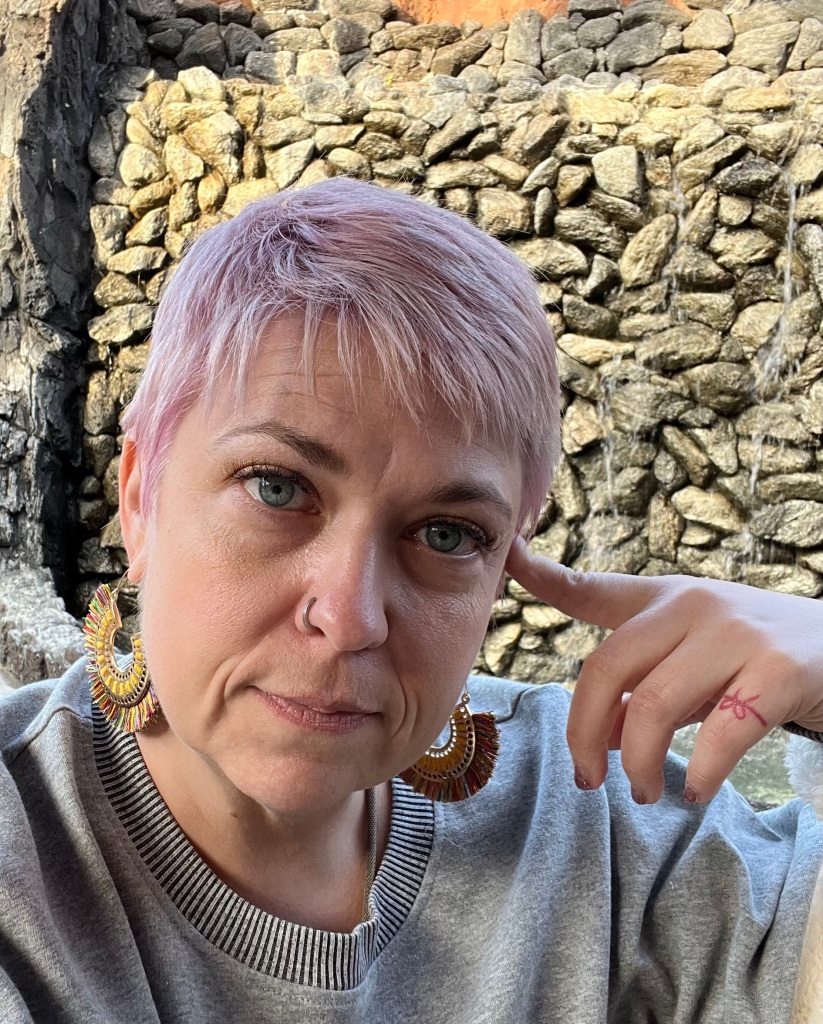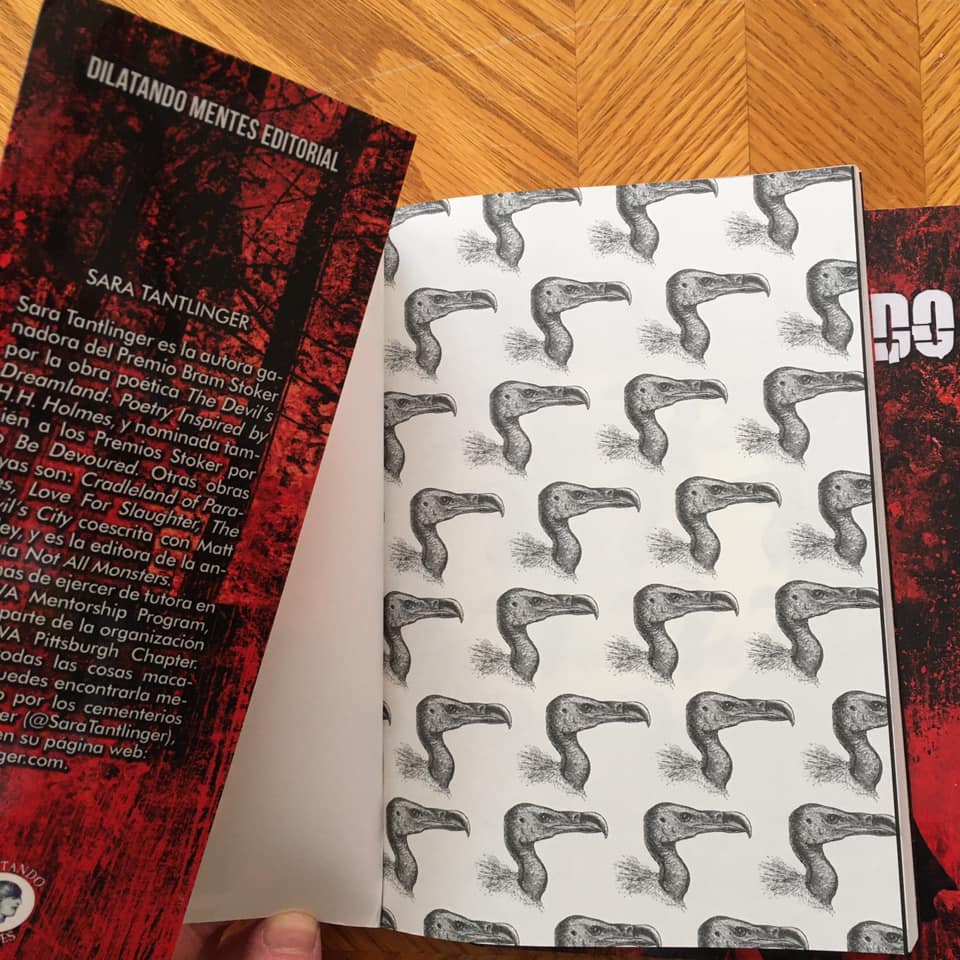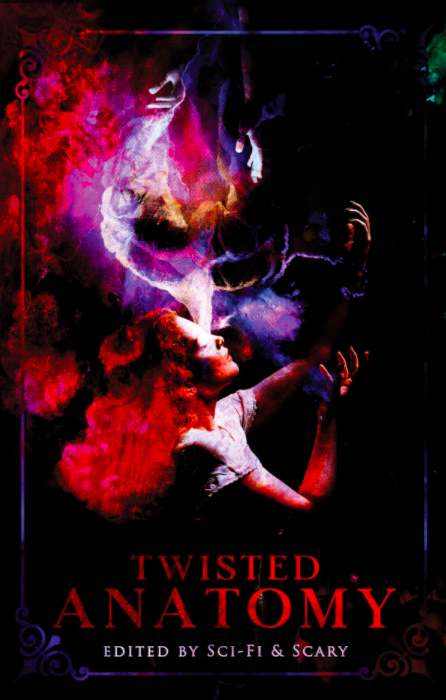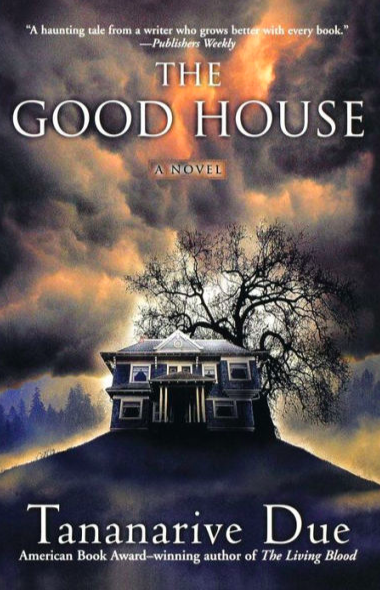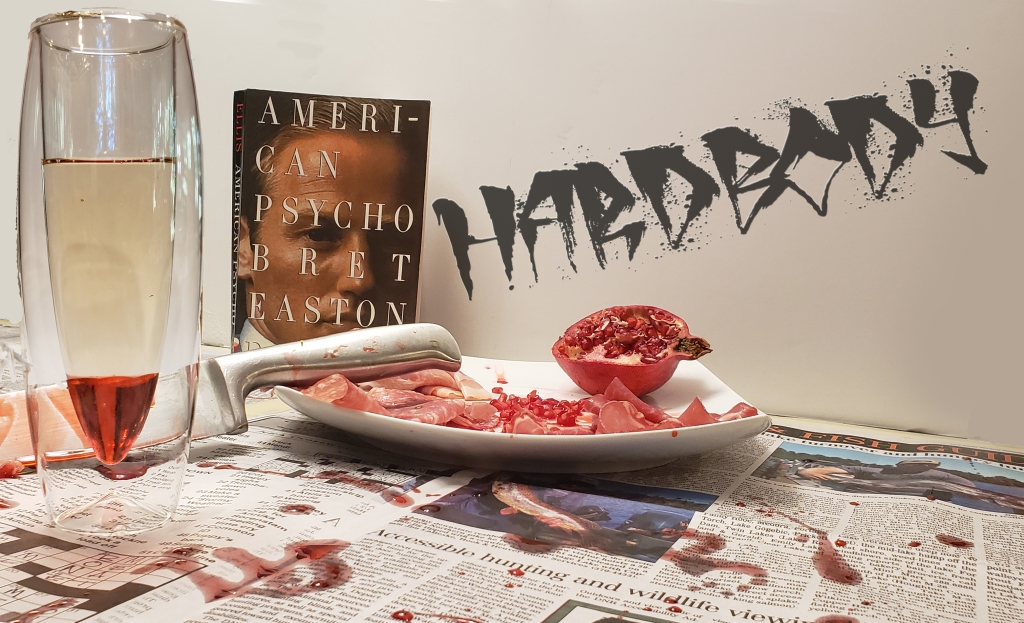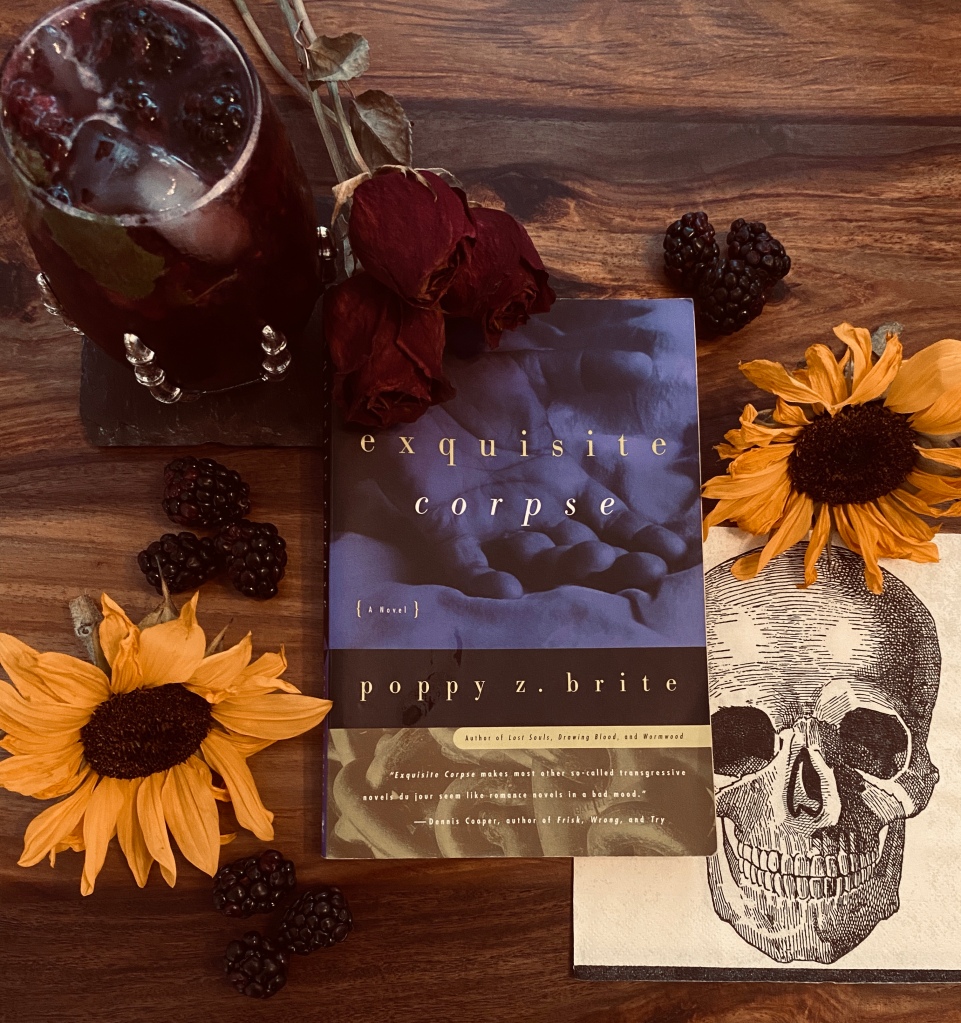Question: I’m saving my favorite question for last because obviously, we have to talk about color! Without giving away any big spoilers, tell us a little bit about your story in Chromophobia. How did color (or colors) inspire the tale? Please feel free to share any other general thoughts on how color can influence a story, especially a horror story.
Nu Yang: I wanted to explore a person’s “aura” in “Elegy.” When I was a newspaper reporter, I had the chance to go ghost hunting with a team of paranormal investigators, and I learned about orbs and what different colors represent when they are captured in photographs. I thought that was an interesting idea. Then, I imagined what it would be like to be missing an “aura” or essentially the color of a soul. Colors usually indicate life, so if someone is missing the color of their soul, what would that mean? My story explores that possibility.
Lillah Lawson: “Burn the Witch (Red)”is a gender-swapped retelling of Little Red Riding Hood. It’s a fantastical horror story, incorporating elements of traditional folk and fairy tales from our childhoods. It’s not a gory slasher, but I hope it’ll unsettle you anyway. I grew up with this huge tome of illustrated Grimm’s fairy tales; while the stories were the usual ones you remember, those illustrations were dark. I wanted to write a fairy tale like that, for grownups – one that has teeth.
K.P. Kulski: Color is always a big part of my stories and the opportunity to write to this for Chromophobia was quite exciting. Every story I write has a color scheme in my mind, even if it’s not all on the paper. Kung Fu films like Hero and Crouching Tiger Hidden Dragon where color plays a big role in each scene has been an influence in how I envision my own scenes.
For Chromophobia, my story “From These Cold Murky Depths” came to me as a dark version of the beach discovery scene from the Little Mermaid, but with quite different power dynamics. A shadowed beach where forms are hard to differentiate, the blue-black of the lapping ocean hinting at the unknowable things it holds, a midnight sky, a new moon, then the rich shimmer of golden hopes, metallic kisses, and the smears of blood it all leaves behind.
Horror and color are intimate partners because color gives distinct impressions. Red for anger and love, red for death. Black for the scary things in the dark. Green that suffocates and infects. Our associations are ingrained into the subconscious and deeply connected to survival instincts. The perfect playground for horror storytelling.
Sonora Taylor: My story, “Eat Your Colors,” is about a woman who gets more than she bargained for when she follows an influencer’s recommendation to improve her eating habits. I’m familiar with all the ways diet culture seeps into our everyday lives and how easily it controls our thinking–I’ve been fat since I was eight years old and no one has let me forget it, especially the media showing me thin bodies that got that way by just eating this or restricting that. I often see the phrase “Eat your colors” sprinkled around food and health posts, and separated from diet culture, it’s not bad advice: It’s the idea that if you eat every color of the rainbow that day, you’re getting the most nutrients. But even something as innocuous and common sense as that can lead to compulsions, stress, or otherwise unhealthy relationships with food; especially in our diet-obsessed culture that’s also obsessed with organic, fresh, raw, and the best possible way to consume that food. You can’t just have tomatoes–they need to be heirloom varieties! What are you doing with those canned vegetables? Eat them fresh! And don’t even think about adding a dressing or dip.
The woman in “Eat Your Colors” ends up in an extreme situation when she takes the influencer’s advice, one that’s highly fictionalized. But a lot of what she goes through mentally was inspired by my own dieting stressors. The scene where she has a back-and-forth about spinach was very personal in terms of how one talks themselves into going against their own intuition in pursuit of following some kind of rule to be healthy. It’s agony–one that’s very profitable to a lot of people.
J. B. Lamping: I wanted to subvert the idea of pastel colors being soft and delicate. I wanted to show how the crisp white and yellow of daisies can be used in a different way. We tend to think of bolder colors as sharper and tougher. I wanted the scariest place to be a pastel kitchen.
Chelsea Pumpkins: I was so intrigued by this call when you first posted it: an anthology of women writing horror inspired by color. I stewed on the prompt for a while until it hit me, right in the uterus.
For many women, menstruating is a mundane fact of life. It’s something we live around and tolerate, but rarely talk about. Over time it’s been considered sinful, taboo, disgusting, and so we’ve been taught to hide it. But under the surface, we’re enduring a transformation, and often it brings pain, emotions, and…its own catalog of colors. Women—check. Horror—check. Colors—check. This is what I wanted to write about!
My story is ultimately about transformation. It’s rooted in a somewhat-universal experience, but morphs into something perhaps more ominous.
Jacqueline West: With my Chromophobia story (“Bluettes”), I wanted to play with the way colors and memories interact. Often we’ll recall a thing as looking a certain way, and then when we see that thing again after a long span of time, our memories and reality will be dramatically different—and still, we’ll swear that house was white, or that his eyes were brown, not blue. That’s a thread that runs through a lot of my fiction: Differences in perception, a character seeing or sensing things that others can’t. In my story, the narrator’s reality is layered with colors and memories of colors, and under those layers are truths about awful things that may have happened, but that she hasn’t yet faced.
Red Lagoe: As much as I love red, choosing that color felt too obvious considering my name. So I closed my eyes and let some colorful imagery come to me. One of the first things I pictured was a sunset. A busy summer boardwalk, backlit by the setting sun—a tangerine sky. An image so beautiful, I wondered what could be horrific about it. We as writers are told to write what we’re afraid of, so for this setting, I wrote just that. Every moment, no matter how lovely the setting seems, girls must keep an ever-present mindset that someone might be targeting them. Just like every other girl, I grew up with a fear of being taken. Now that I’m older, I still fear being a target for assault, but I have children to worry about too. It makes me ask, “How civilized can we really be if we must train our children to evade predators of our own species?” It’s infuriating! “Tangerine Sky” explores those fears and frustrations.
Jess Koch: “Hollow Bones”is a story about a woman who makes a radical choice to change her life in hope to get back something she lost. To her, color represents beauty and worthiness. Without giving too much away, I was inspired by colors in nature and in particular the colors of tropical birds for this story. I started thinking more seriously about the role of color in stories–and specifically horror stories–after watching Midsommar and seeing that horror can be bleak and terrifying but also visually beautiful.
Jeanne E. Bush: Color can add so much to a story. Darkness can express fear or evil; a pink sunrise in the morning can show hope; red is blood; green is nature. I knew immediately that I wanted to submit to the Chromophobia anthology because the idea of color used in horror is so intriguing. With my story, “Wheels”, I knew the story I wanted to write, a woman caught in a precarious situation. As the story unfolded, instead of forcing the use of color, the colors unveiled themselves and were influenced by the story. It was a magical event. I wanted the colors in my story to add both a melancholy mood and a dreamy quality. As beautiful as a rainbow is, there are many colors outside of that spectrum, and for my story, the colors I used gave it a depth that I didn’t expect.
Tiffany Morris: I wanted to play with a little bit of literalism around having “the blues”, and mental illness as a sort of possession, so the two came together in interrogating what it would be like to be ‘possessed’ by a color. Color itself is kind of contradictory – it speaks to our radical subjectivity in terms of preferences and perceptions, but also operates in a shared cultural language of symbolism. As such, I think color is a great tool for creating and emphasizing uncanny inversions and strange symbolism.
G.G. Silverman: My story, “The Gray”, is inspired by my experience of living in the Pacific Northwest for the last decade, and how atmospheric conditions affect so much of our lives here. I wanted to take the mood I’ve encountered in many of my wilderness and coastal explorations, or even at home in my neighborhood, and use that as inspiration for a terrifying ubiquitous threat. When the call for submissions for Chromophobia opened, I had been tumbling the story around in my head for about a year, musing about it every time I was outdoors on our characteristically gray days.
Color can influence a story on many levels, from the obvious to the more subtle. I once took an enlightening writing workshop taught by the Chilean author Lina Meruane, of Seeing Red, and she gave us an exercise to write while informed by the energy of a color, even if we didn’t explicitly name the color. It was an incredibly thoughtful exercise and I learned a lot from it.
To that end, I’m really excited to see how my fellow Chromophobia authors explored color!
Geneve Flynn: My story “Double Happiness” revolves around the Chinese practice of ghost marriage. Dying unwed brings great shame to families, so the families will sometimes match their son or daughter to another deceased person. Not all arrangements are above-board because of the unbalanced ratio of males to females in China; there have been cases of grave-robbing and murder in recent years.
In Chinese culture, the color red is considered very auspicious. It symbolizes joy and luck, and is often used at weddings to wish the couple vitality and fertility. Couples are gifted money in red packets with the logograms for double happiness printed on the front.
In western society, red often signals danger, or bloody horror. It’s fascinating that color can mean such different things in different cultures. I played with the two opposite meanings to create a tale about greed and just desserts.
I think color can foreshadow the terror that’s to come if you play to tropes, but it can also surprise the reader and create a nice, jarring juxtaposition that will put the reader on the back foot.
KC Grifant: In my day job I’ve learned a lot about neuroscience, including how the brain is influenced by the space (shapes and colors) around us. Studies have demonstrated that spatial environments can have a dramatic, though temporary, effect on our brains’ activities in areas ranging from retail to healthcare. For example, the same food served on differently colored plates can lead to a person reporting different tastes. While visual artists have a deep understanding of color, I think the use of color to elicit emotion is sometimes under-appreciated in writing.
I had fun experimenting with drawing out and honing color themes in “The Color of Friendship” in a way that is hopefully subtle but effective. In it, a sickly green hue underlies the tone of the story—that murky, icky feeling that embodies a life that hasn’t gone according to plan, a wrong turn that is hard to shake. Coupled with the character’s dissatisfaction is the intense jealousy and resentment toward her friends, who seem to have the secret to securing the successful life she wishes she had. And, since it’s horror, the story shows what happens when those bottled feelings and emotions finally find an outlet.
Frances Lu-Pai Ippolito: I’m inspired by Chinese mythology and folklore. Color plays a big part in Chinese superstition and tradition. Red is often associated with good fortune. Red clothes for a wedding and red signs/posters for Lunar New Year. White, on the other hand, is the color of mourning clothes. And, black, can portend something ominous. For my story, Hei Xian, I wanted to invert the connection of the color red with love/fortune to create the fear factor tied to black. Everything in the story focuses on the effect of color and superstition on relationships and decisions. I had this story in my head for a long time and was so grateful for the Chromophobia call that finally pushed me to write it all out.
EV Knight: My story “Red Light/Green Light” was inspired by my childhood days spent playing at my grandmother’s house and the inevitable pains that come with growing up especially as a girl/woman. When I look back in my memories, the colors at my grandmother’s are so much more vivid than any other time in my life. There were neighborhood kids and cousins to play games like Red light/green light with. Most importantly, my grandmother and I had this close relationship that made me feel safe, happy, and invincible. But life happens, we grow up, people who are fixtures in our lives grow old and pass away. I tried to take all those emotions and put them into a story as a homage to my love for my grandma who would have been 100 years old this year.
Kathryn E. McGee: My Chromophobia story, “Golden Hour,” is about a selfie museum gone wrong. I think there’s something inherently unsettling about selfie museums and have been wanting to use one as a story setting for a while. For those who haven’t gone down this rabbit hole, selfie museums are spaces designed around providing backdrops for selfies. They often have themed rooms and lighting engineered for photography. I’ve been following the Museum of Ice Cream on social media for some time. That one has a multitude of colorful rooms decorated with ice cream-themed backdrops seeming to escalate in their whimsey (a ride-on animal cookie, a banana swing) and climaxing in a room consumed by a giant pool filled with plastic sprinkles. The sprinkle pool selfie (taken on your back making sprinkle-snow angles) seems to be the shot everyone makes sure to get. I couldn’t help relating this sequence of unusual and colorful spaces to the color-specific rooms in Poe’s story, “The Masque of the Red Death,” in which the rooms get increasingly creepy, culminating in the dreaded black-and-red room. This line of thinking influenced my own story, which relates the colorful, seemingly harmless rooms of a selfie museum to one visitor’s dark thoughts and feelings.
Ali Seay: My story “Nesting” is about a widow’s devastating loss and the urge to give up totally. I know the first thing that sprang to mind when I read the Chromophobia call was the song “Yellow” immediately followed by a mental image of the chakra chart. I read (very briefly, this was not in-depth research by any means) that the yellow chakra (solar plexus) could come into play with rebirth. The overall feel of my piece is a weird juxtaposition of utter despair and an exhausted kind of hope. The color yellow is not one that rushes to mind when thinking of horror, so I liked that a lot about my brain’s choice (lol). Red and black are the most obvious, so a sunny color usually associated with happiness was an interesting turn of events.
Pippa Bailey: “Achromatica” is less about colour and more about the absence of colour. I wrote the story in the wake of the George Floyd murder. I spend a significant amount of time thinking about the importance of colour in the world and what would happen if everything was white. I hadn’t meant for the story to reflect anything more than what it is, a story of an unknown creature’s impact on our world. As I wrote, it became so much more. I found myself looking at the effects of whiteness on our planet and the damage it causes, not only at a social and cultural level but down to the very basis of the scientific impact on our surroundings. We need colour; we need variation; we need the inclusion of everyone and everything. You can’t think of love without red, coffee without rich hues of mahogany, sunshine without its glorious yellow, and the crispness of green grass on a dewy morning. Horror is crimson blood, ochre mud on knees, the bloom of a violet bruise on scarred knuckles, and the crystalline blue of an eye, staring through a hole in the wall. We live a rainbow existence, and we need to keep it that way.
Jo Kaplan: I’ve been fascinated by impossible colors for a while. Colors outside of the rainbow aren’t new to horror (see “The Color Out of Space”), which makes sense in a genre interested in exploring beyond ordinary experience. We can see chimerical colors, temporarily, by staring at one color long enough to fatigue receptors the eye and then looking at another color. Hyperbolic orange, for instance, happens if you stare at cyan and then look at orange. The afterimage is a super-intense orange. You can see self-luminous red by staring at green and then looking at white, which creates a red afterimage that is somehow brighter than white. Then there’s stygian blue: both very dark and impossibly saturated. Stare at bright yellow and then look at black, and you’ll see a blue afterimage that is as dark as the black. It’s a color we’re not supposed to be able to see. Would staring at such a color for too long begin to affect not just our sight, but our minds? In what strange depths might we discover not just our attempted recreation of the impossible color, but an actual manifestation? That’s what was on my mind when I wrote “Stygian Blue.”
Lauren C. Teffeau: Well, my story “Gray Rock Method” is more or less literalizing the metaphor for a technique used for coping with high-conflict individuals. I’ve put my own twist on it, of course. I hope my use of color heightens the dramatic tension and highlights the emotional arc of the main character. Color has lots of unconscious symbology that is always fun to play with as a writer, and it can be a really great shortcut for punching up the atmosphere in a story. I can’t wait to see how the other anthology contributors have used it in their stories!
Bindia Persaud: My story takes place in a quasi-matriarchal society where traditionally female arts (in this case, textile arts) occupy a higher, more honored place than they do in our world. In this world, color, instead of being merely ornamental and decorative, is of vital importance.
Christine Makepeace: Well, my story involves some body horror, and no spoilers, but the insides of bodies are very colorful places. Color is always a great way to communicate mood and help readers see the world you’ve built more clearly.
Christa Wojciechowski: I’ve been studying color lately for my current series-in-progress. It’s a fascinating topic. Objects don’t really possess color in the way we intuitively think about it. They reflect a color of light. As humans, we assume that what we see is objective reality. We are only seeing a version of it. Other organisms in the animal kingdom see an entirely different world. The mechanisms that allow us to see and use color in our brain are mind blowing. We are lucky to perceive such a beauty. My sister is blind, so I never take the ability to see color for granted.
We human have attached emotion to color. It makes an instant impression and can be more efficient in triggering a response than a handful of words. In “The Oasis”, I used colors to make the atmosphere and tone more vibrant and palpable. I also like to invert their associations. For example, green makes us think of plants, growth, freshness, and life. On the flip side, green can signal putrefaction or infection. Red symbolizes love, but it can also tell us death is near. If you see too much red, things are not going well! I like to play with those juxtapositions.








